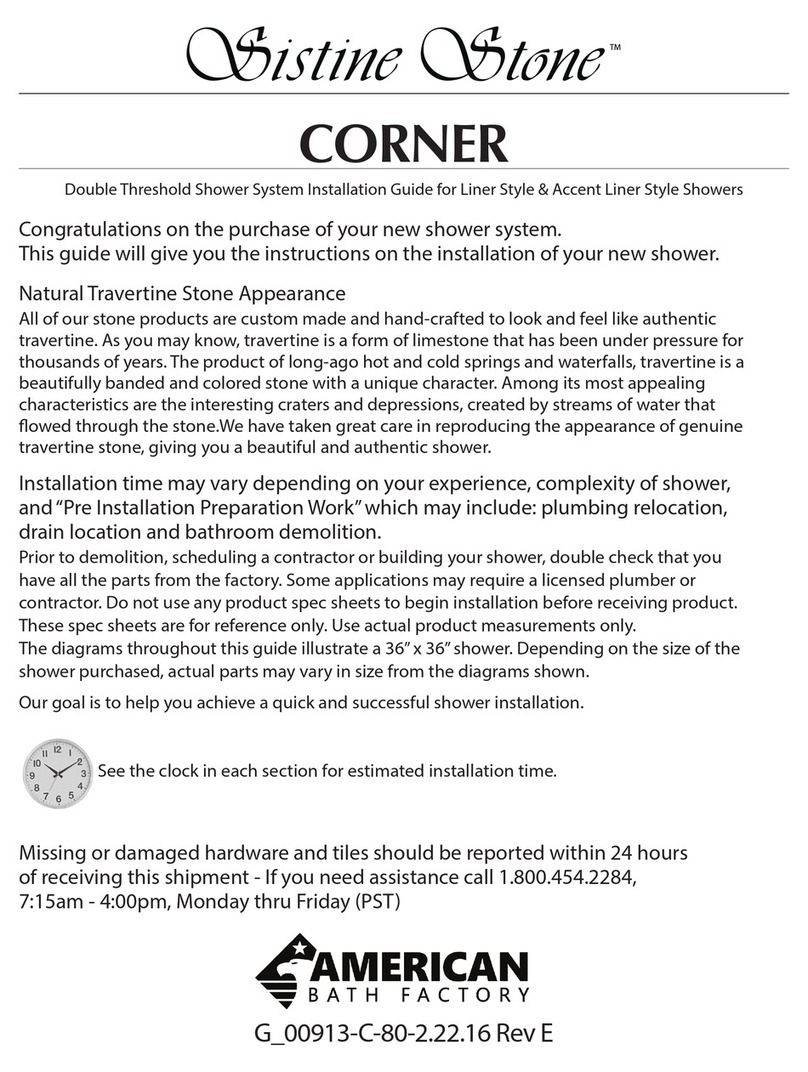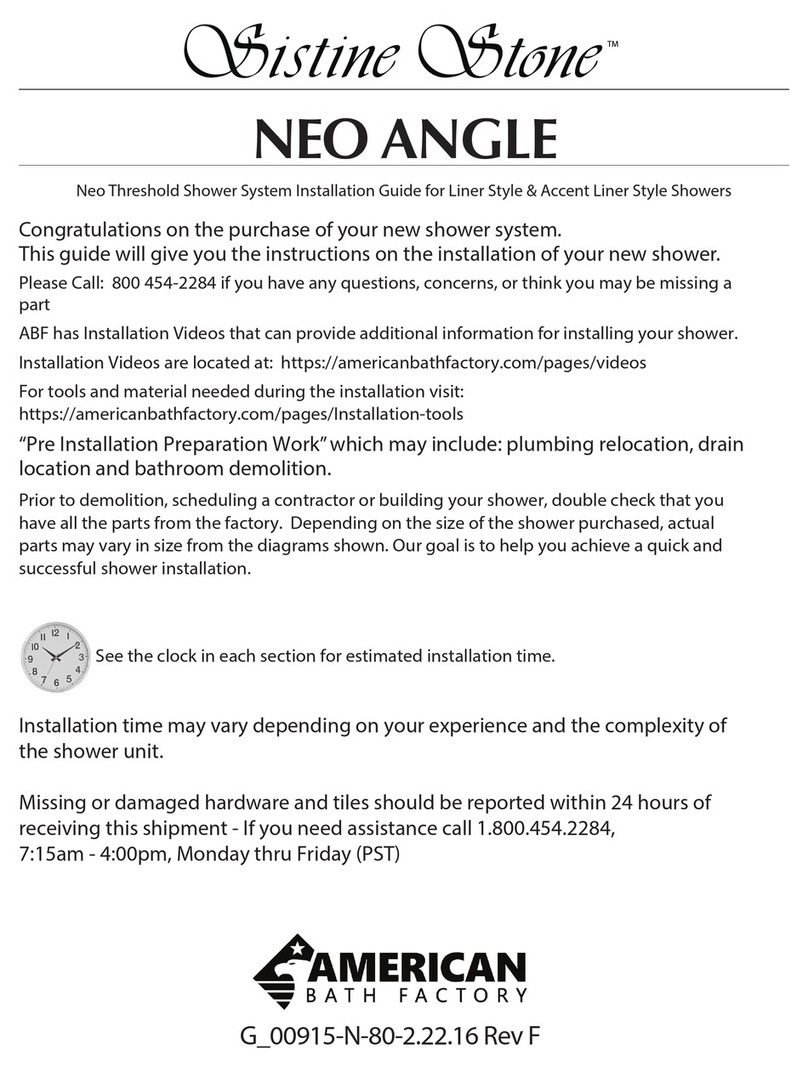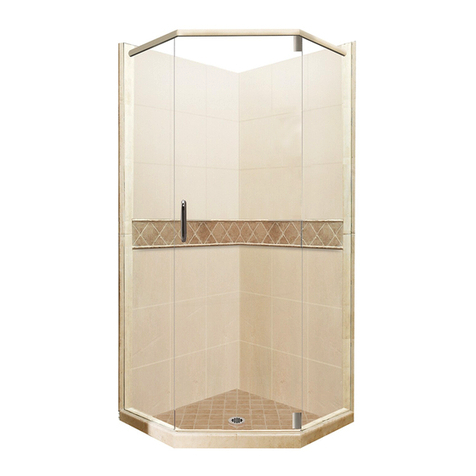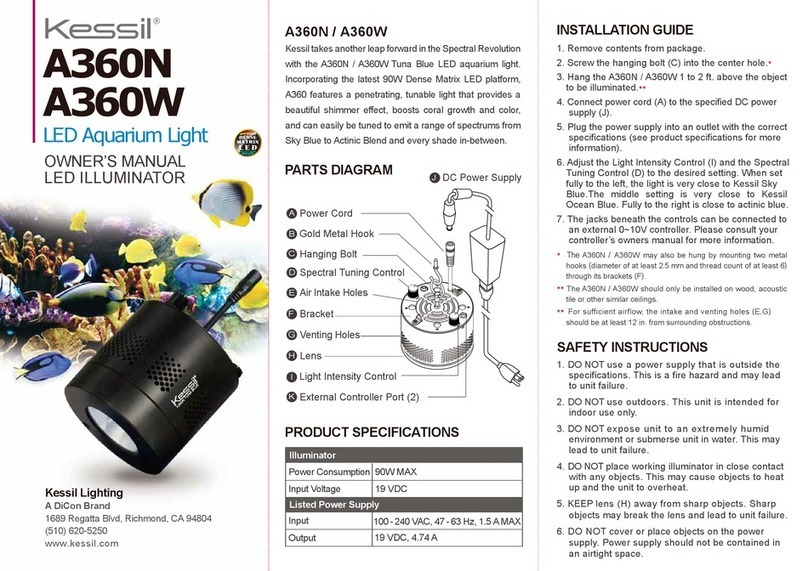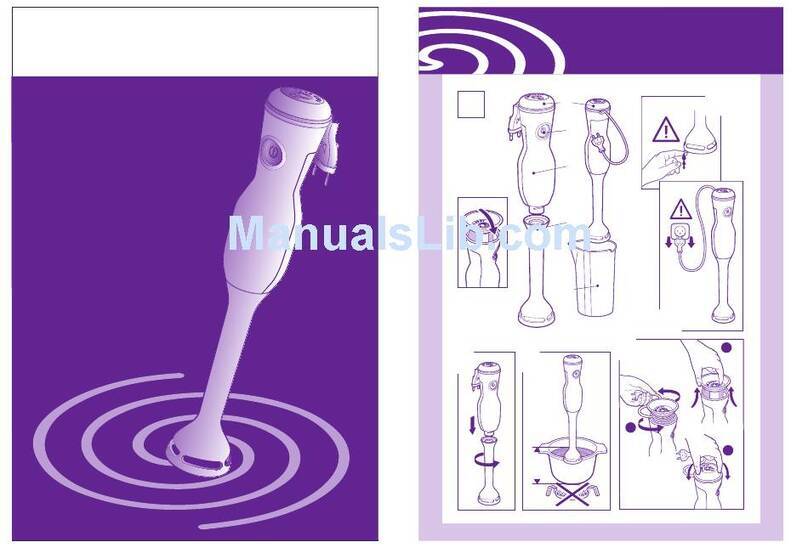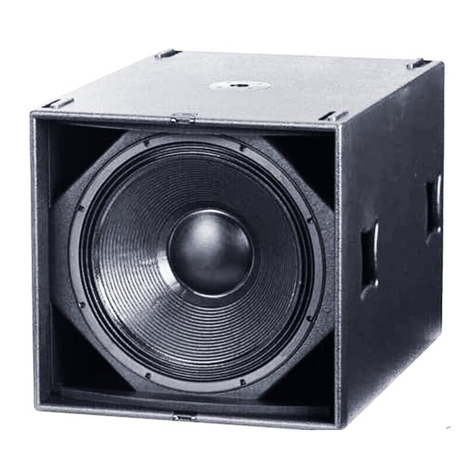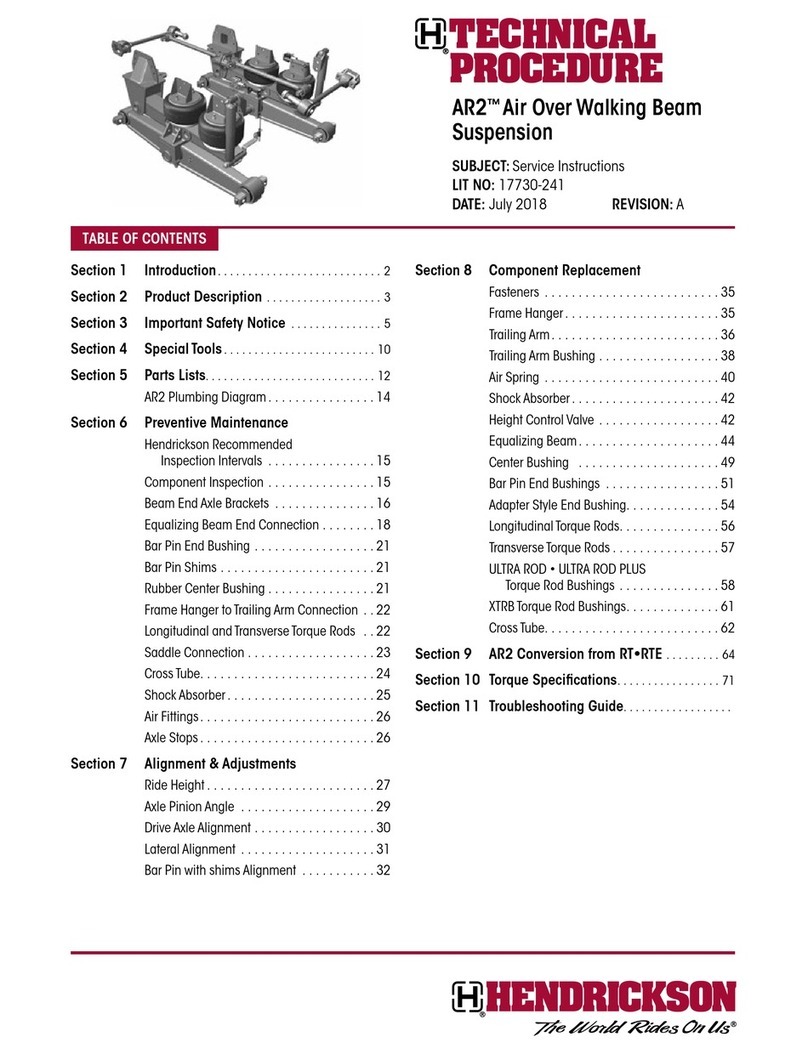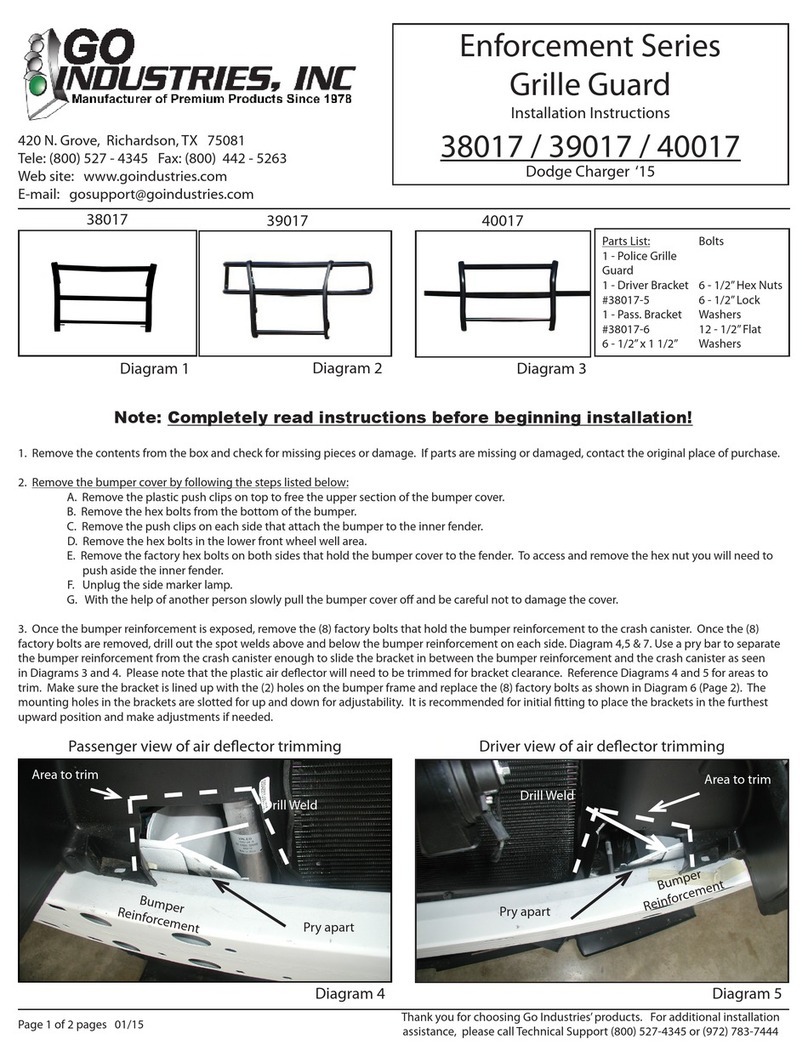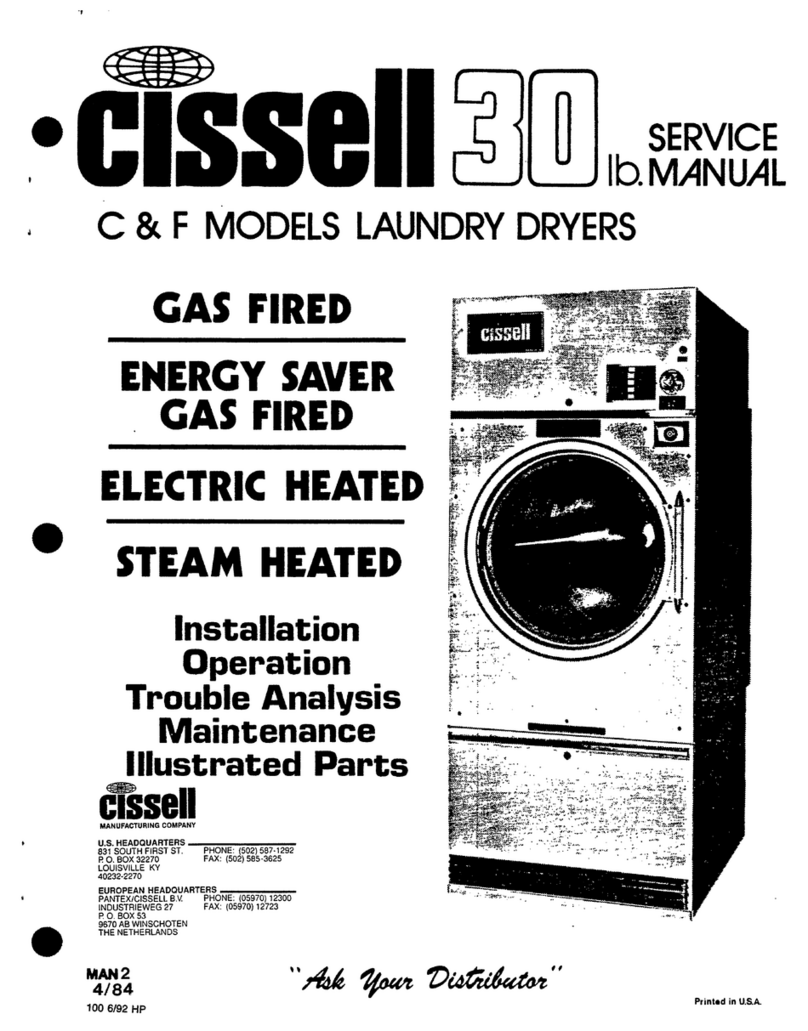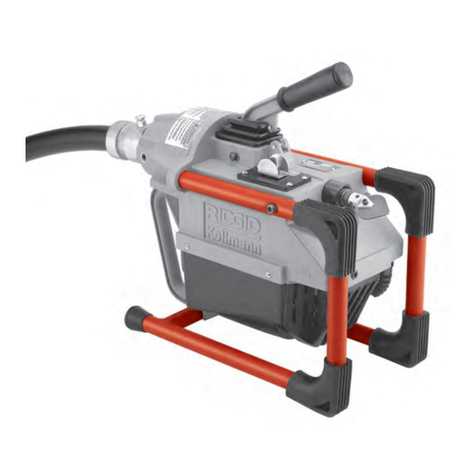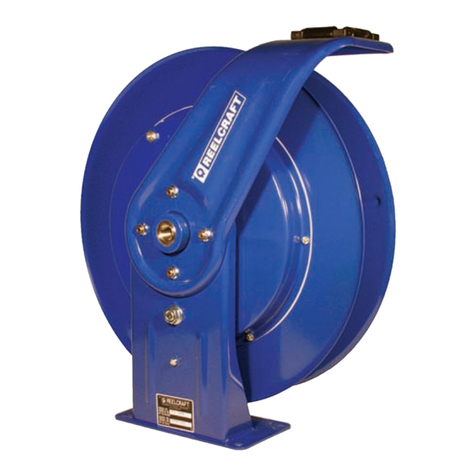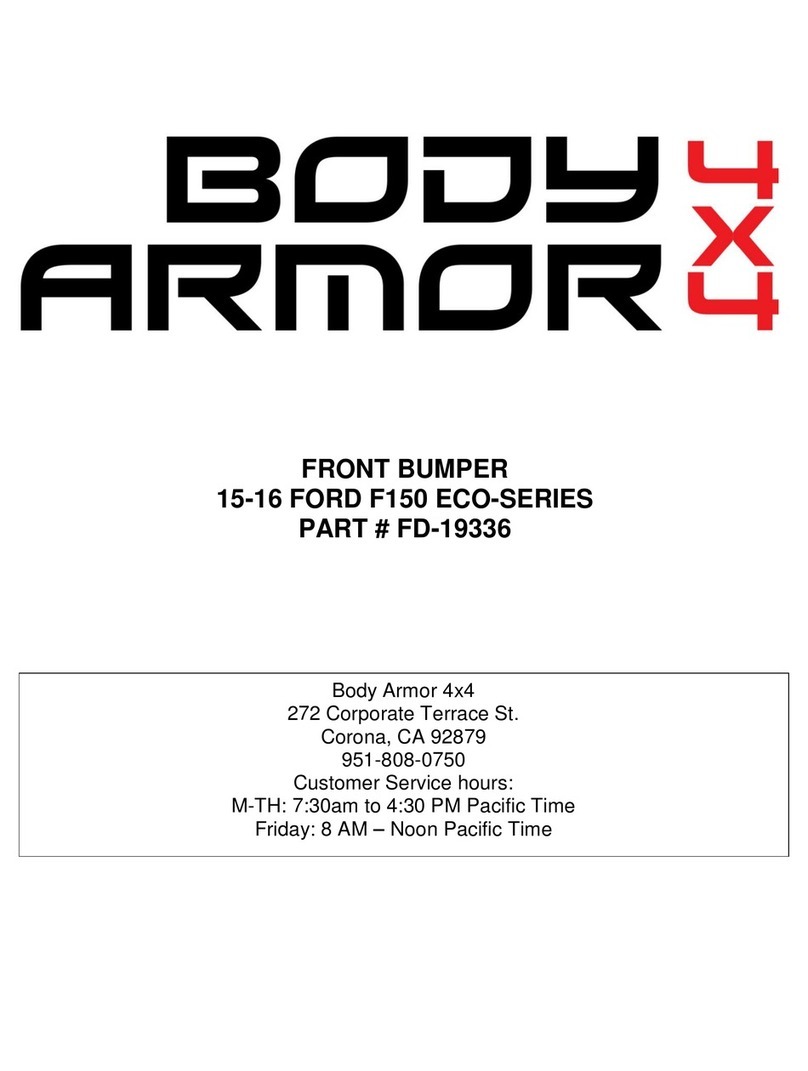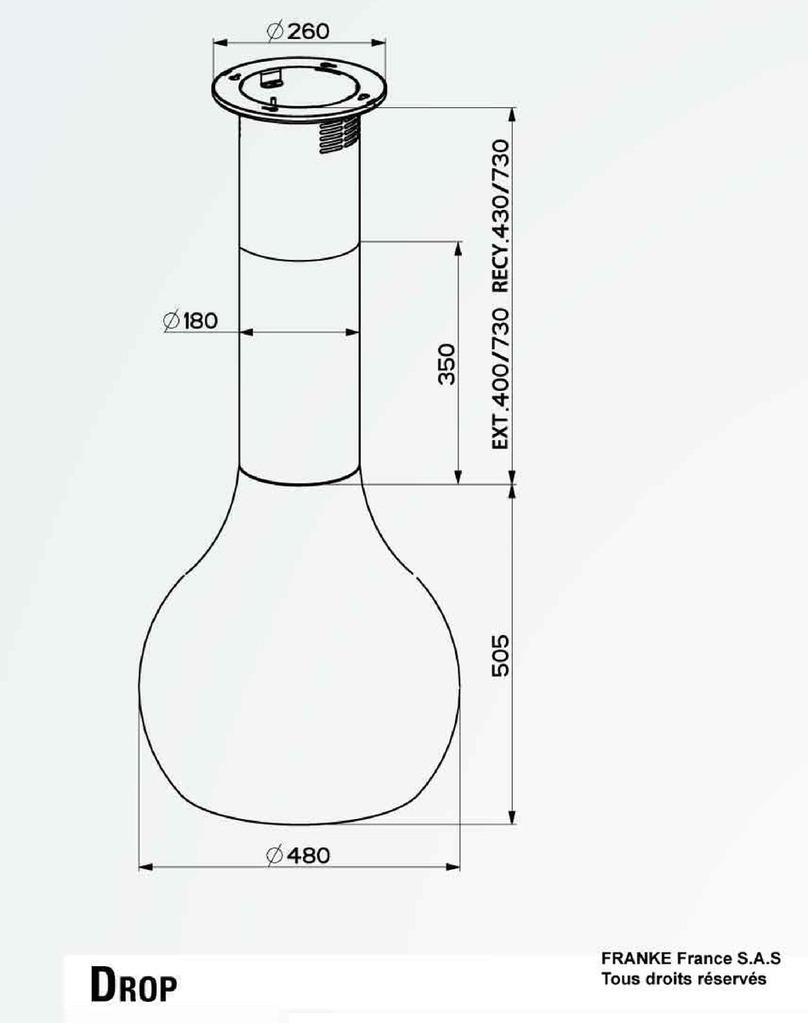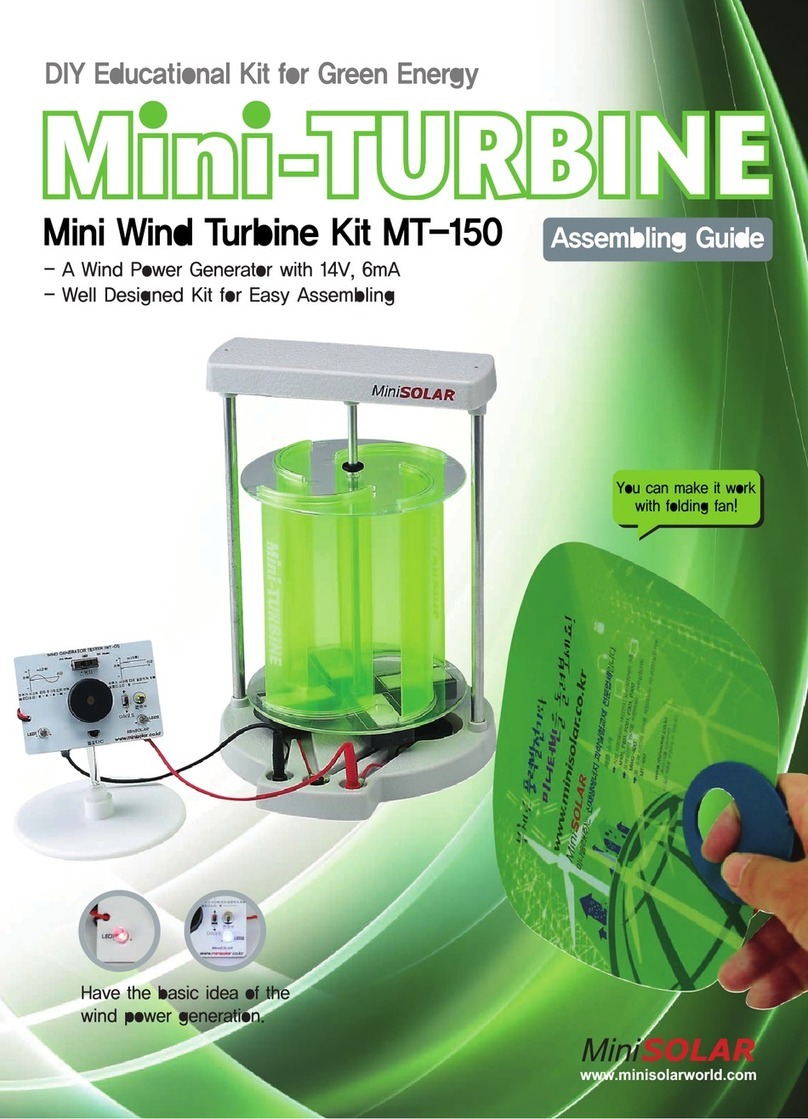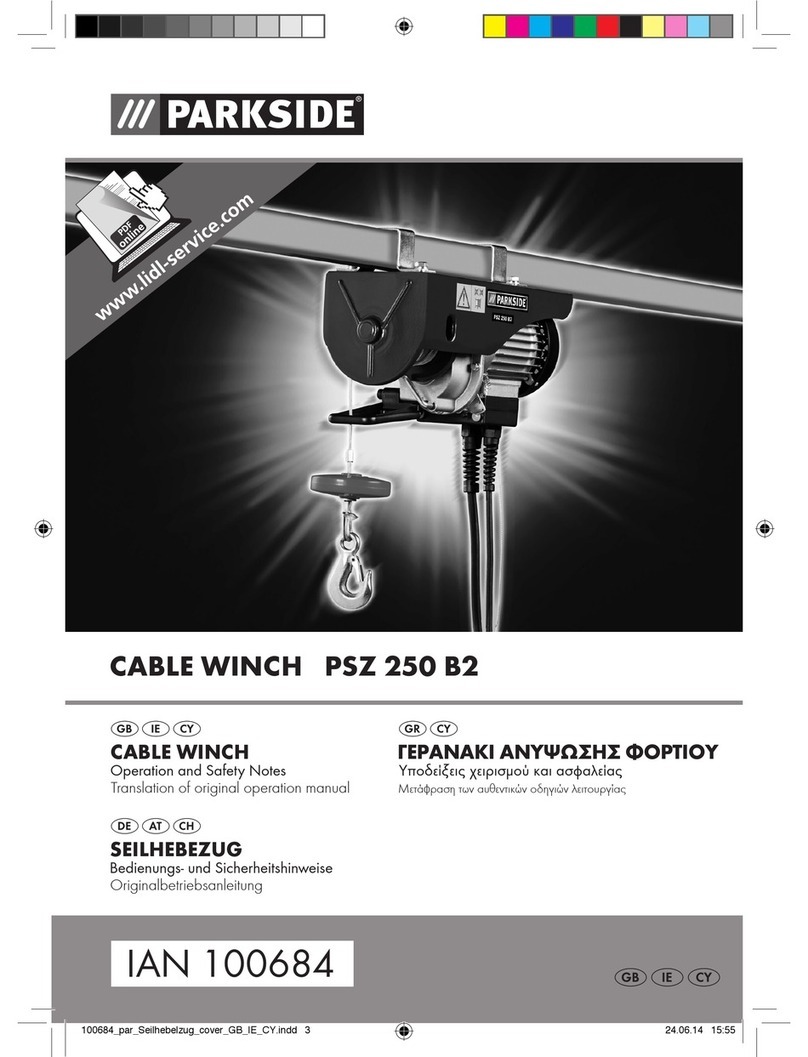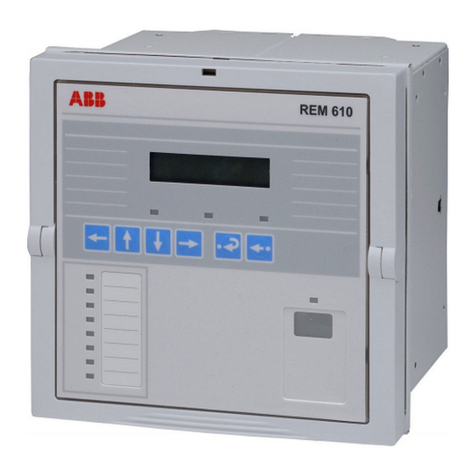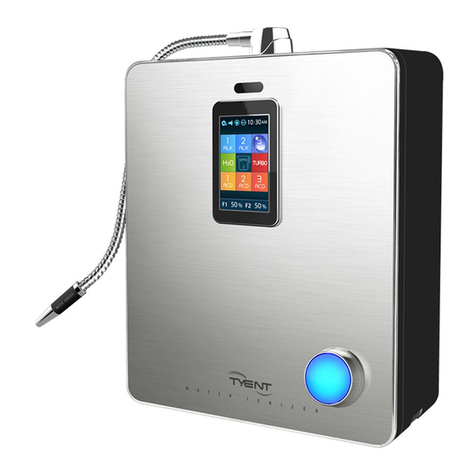
apply 100%
RTV silicone
6TIME REQUIRED
½ HR
6
7CEMENT BOARD INSTALLATION TIME REQUIRED
1-2 HRS
We recommend the use of 1/2” thick cement board as your shower backer. This is a common backer for stone and tile. Using this backer will help comply with
almost all city codes. A cement-based product like Wonderboard or Hardibacker may also be used if it meets your local codes. Some codes require a vapor
barrier to be installed as well. We recommend a water/vapor barrier of 6 mil. plastic be installed before installing the cement board. To do this, staple plastic
so that it hangs 1” above the floor. Roofing nails may be used to attach the cement board instead of screws, this prevents the plastic from wrapping around the
screws.
SETTING PAN
1. IMPORTANT: Use your cement board as an indicator of squareness. The cement board comes in
square sheets. If you see gaps or areas where the cement board is not fitting flush, fix
the problem by removing the cement board and shimming the board until it’s square and
flush. If the seams of the cement board are not flush and square, your wall panels will not
be square and flush.
2. Cut a notch in cement board to fit around threshold. Sanding or shimmimg the 2 x 4’s at the
top rim of the pan may be required to flush the cement board. (diagram 8)
2. Place a bead of 100% RTV silicone on the front INSIDE face of the shower pan flange. The bead
should be in a zig-zag pattern.
3. Place the cement board against the studs and rest it inside the shower pan against the back
flange. Attach the cement board to the studs with screws or nails. Do not screw or nail into
the shower pan flange.
4. Continue installing the remaining cement boards.
For best cutting results for wall panels and cement board, use a Makita grinder with a 4” tile blade.
notch
diagram 8
1. Now that the drain is installed into the pan dry fit the pan and drain for alignment, check to
make sure the 2” drain pipe is in the center of the pan drain hole. (diagram 2) Use the drain
collar #5 by itself; remove the rubber seal, nut and gaskets from the drain assembly.
(diagram 3, previous page) Push the drain collar #5 into the drain hole between the pan
and the 2” pipe. With the drain collar pushed flush to the pan surface, the 2” drain pipe should
not extend past the inside threads of the drain collar #5.
2. Make sure the pan and drain fit level to the floor (the pan can be secured to the floor by nailing
the pan flange to the studs, this can only be done after step 3 is completed)
3. Remove pan and apply 100% RTV Silicone to the floor (diagram 7)
4. Carefully lift the shower pan and set into place. Make sure the ABS pipe is still centered.
5. Push and secure the rubber seal #4 onto the 2” ABS pipe.
6. Thread on the brass pressure ring #3 around the drain pipe with the provided tool #2.
Remove the tool after the brass pressure ring is installed.
7. Test and snap the decorative diamond trim plate #1 into position. (Remove the decorative trim
plate and store in secure area until installation is complete, drain will be grouted when shower is
grouted).
8. After installing pan, cover with cardboard or drop cloth to protect pan from scuffs.
diagram 7

